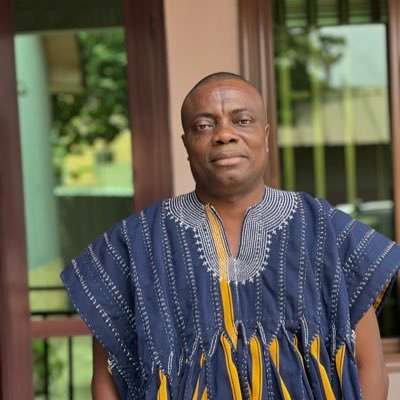Polls have once again proven that they are not just numbers on a page but instruments capable of shaping strategy and outcomes in politics.
In the 2024 parliamentary contest in Asuogyaman, the contest between Deputy Finance Minister Hon. Thomas Ampem Nyarko and his challenger, Pius Hadzide, offered one of the clearest examples yet of how political fortunes can swing when data is taken seriously.
Mussa Dankwah, Executive Director of Global InfoAnalytics, noted that Ampem Nyarko’s eventual victory was not a straightforward ride.
Instead, it was a story of resilience, data-driven tactics, and a wake-up call for politicians who often dismiss polling results until it is too late. He described the August 2024 polls as the moment when the incumbent nearly lost control of his campaign.
At the time, Dankwah explained, Nyarko had grown complacent, creating room for his opponent to dig into his support base. Pius Hadzide gained traction particularly in areas with significant Ewe and Ga-Adangme populations.
What had initially looked like an easy win for a candidate whose party was tipped to sweep both the parliamentary and presidential elections suddenly became a real fight for survival.

“Pius Hadzide had led with 54% share of the votes while Thomas Ampem Nyarko was gasping for air at 21% in the August 2024 poll. The poll shocked the NDC to the core and took the poll very seriously.”
Mussa Dankwah
The revelation jolted the NDC’s campaign machinery. In response, they quickly shifted gears, deploying MPs from Volta and Adangme to Asuogyaman to rally ethnic support, a tactic they had also used in the Assin North by-election when polls revealed similar challenges.
According to Dankwah, this was a clear demonstration of how strategy is sharpened when guided by polls.
A Campaign Rescued By Data, Polls
The Asuogyaman polling numbers also exposed another surprise. Nyarko was losing ground even in Anum and Bosso, Guan communities considered his natural base.
While some analysts initially thought these results were outliers, the candidate himself treated the figures as urgent warnings. He abandoned complacency and returned to active campaigning.
The August polls painted a grim picture: only 2% of NPP voters planned to back Nyarko, while 16% of NDC supporters were willing to cross over to Pius.

On the ethnic front, Pius was riding high—62% support among Akans, another 62% from Guans, 45% from Ga-Adangmes, and 42% from Ewes.
The trajectory suggested that Pius was comfortably on his way to victory. But the tide began to turn in September.
“In the second poll conducted in September 2024, things began to shift in Thomas’s favour both from partisan and ethnic demographics. By September 2024, the poll numbers for Pius had started to soften.”
Mussa Dankwah
This shift saw Pius drop to 45%, while Nyarko climbed from 21% to 28%. At the same time, undecided voters surged from 7% to 20%, creating fresh uncertainty around Pius’s viability.
Dankwah pointed out that these shifts were not accidental. Nyarko’s numbers improved across nearly every ethnic group: a 5% increase among Akans, 10% among Guans, and 13% among Ewes. The only exception was among Ga-Adangmes, where he dipped by 1%.
By November, in the final poll before voting day, the two candidates were locked in a statistical dead heat—46% for Pius and 47% for Nyarko.
Ethnic Groups Shaped The Final Victory
Dankwah emphasized that the deciding factor came from ethnic realignments in the final weeks. Nyarko achieved notable gains across all groups.
He added 7% among Akans, secured a dramatic 27% jump among Guans—where he now led 55% to 35%—and advanced 10% among Ga-Adangmes, opening a 58% to 36% lead. Among Ewes, his support climbed by 18%, giving him a 56% to 36% advantage.
“A closer look at the final results showed Pius on 44%, just 2% away from the final opinion poll, which had him on 46% but Ampem Nyarko outperformed the poll, which had him on 46% by 8%, finishing on 55%.”
Mussa Dankwah

The results demonstrated that although Pius performed close to expectations, Nyarko significantly outperformed projections, largely because Guans, Ewes, and Ga-Adangmes abandoned earlier inclinations to vote NPP and instead rallied behind him.
“It appears from the data that Thomas Ampem Nyarko’s victory was sealed by the Guans, Ewe, and Ga-Adangme voters who had earlier suggested that they were going to vote for Pius, a promise that was not fulfilled.”
Mussa Dankwah
For Dankwah, the lesson is clear: campaigns that rely on history or assumptions risk being blindsided, while those who invest in data-driven decisions maximize their chances of success. “The lesson here is that you can insult us for whatever reason, but don’t joke with the data that contains the genome of winning an election.”
He stressed that the lessons from polls are not limited to politics alone. The same principle of deploying resources where they are most effective applies across different fields—from warfare to business.
In this case, those who embraced polling data and used it strategically emerged victorious, while those who depended solely on historical patterns were left struggling.
The Asuogyaman race has now become a case study, proving that in Ghana’s competitive political climate, polls are no longer optional—they are the roadmap to victory.
READ ALSO: GNPC, PC Seal Revenue Sharing Agreement on Voltaian Basin Project



















